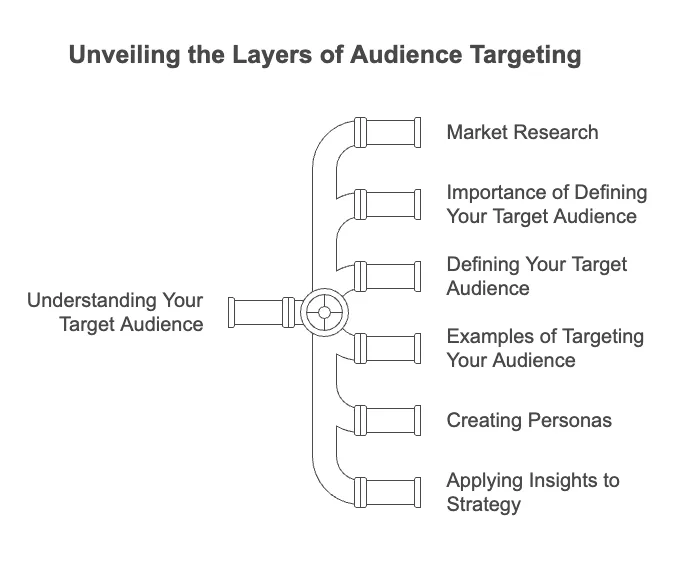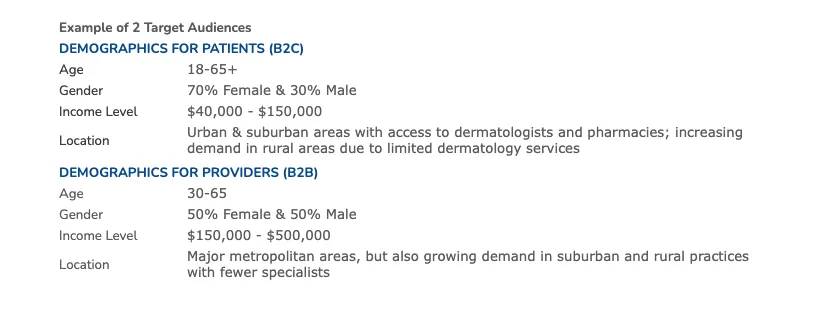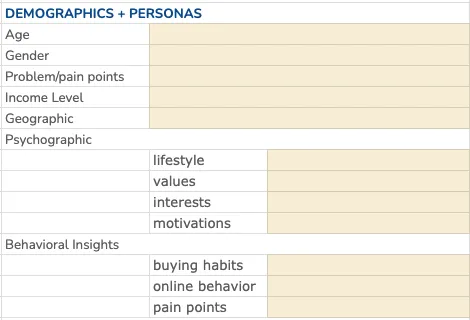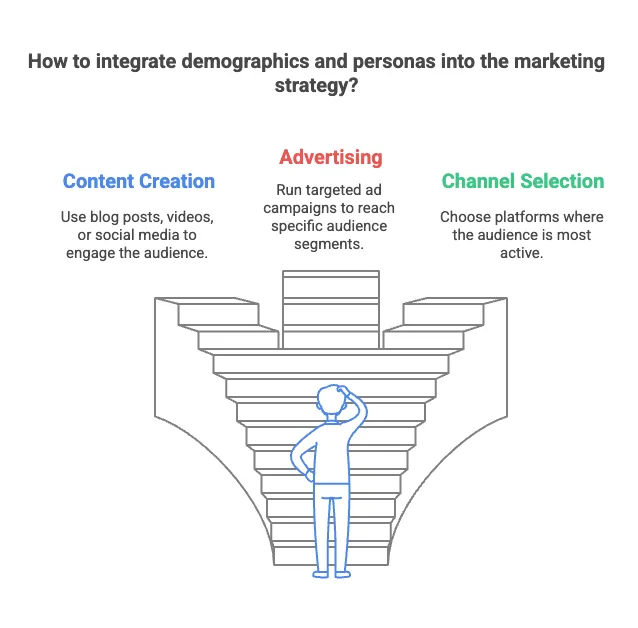How To Define Your Target Audience
Once you’ve defined your company's purpose, the next step is understanding who you’re here to serve. Defining your target audience means digging into the people most likely to benefit from your product or service—their needs, preferences, behaviors, and challenges.

Know who you’re talking to—so your message hits home.
Look at their demographics (age, location, income), their lifestyle and values (psychographics), and how they make decisions. The more clearly you define them, the more effective your marketing becomes.
When you truly understand your audience, you can speak their language, show up where they are, and create content that feels relevant and personal. That connection is what turns interest into action. If you are looking for more of a summary on how to define your audience, here is a link to easily define your Target Audience. If you want more in-depth information, please read on.
How (and Why) to Define Your Target Audience
• Market Research
• Why Defining Your Target Audience Matters
• Defining Your Target Audience
• Examples of Targeting Your Audience
• Creating Personas for a Deeper Understanding
• Applying Target Audience Insights to Your Marketing Strategy
1. Market Research:
MARKET RESEARCH
Market research and analysis are essential components of a successful marketing strategy. They help businesses understand their industry, target audience, competitors, and market trends to make informed decisions.
WHAT IS A MARKET RESEARCH?
A Market research is the process of gathering, analyzing, and interpreting data about a market, including customer preferences, buying behavior, and industry trends. It helps businesses identify opportunities, minimize risks, and create data-driven marketing strategies.
TYPES OF MARKET RESEARCH:
Primary Research – Direct data collection through surveys, interviews, focus groups, and observations.
Secondary Research – Using existing data sources such as industry reports, competitor analysis, and market studies.
TOOLS FOR A MARKET RESEARCH:
• Surveys, focus groups, interviews, and feedback forms.
• Analytics platforms (Google Analytics, SEMrush)
• Industry reports and research (Gartner, Forrester)
Clarity on your market, your customers, and where you stand.
By doing market research, you gain a solid understanding of current market conditions, what your customers truly need, and how your business stacks up against the competition. It’s the insight that helps you make smart, strategic decisions.
2. Why Defining Your Target Audience Matters:
One of the most critical steps in building an effective marketing strategy is defining your target audience. Your target audience consists of the specific group of people who are most likely to be interested in your products or services.
Understanding their demographics, behaviors, needs, and pain points allows you to create tailored marketing messages that resonate and drive engagement.
It improves marketing efficiency: By knowing who you are targeting, you can focus your marketing budget and efforts on the right people, reducing wasted resources.
It enhances personalization: Customizing your messaging to fit your audience’s interests and pain points increases engagement and conversion rates.
It increases brand loyalty: When people feel understood and valued, they are more likely to trust and stay loyal to your brand.
It optimizes channel selection: Understanding where your audience spends time helps you choose the best platforms for reaching them.
When You Know Who You’re For, Your Message Comes Alive
3. Key Factors in Defining Your Target Audience:
DEMOGRAPHICS
Demographic information provides a basic overview of who your ideal customers are. Key demographic factors include:

AGE
Different age groups have varying needs and preferences.
GENDER
Understanding gender distribution can help in product positioning.
INCOME LEVEL
Determines affordability and price sensitivity.
LOCATION
Urban, suburban, and rural differences impact accessibility and demand.
PSYCHOGAPHICS
Psychographic data dives deeper into your audience’s lifestyle, values, interests, and motivations. This helps you craft messages that align with their aspirations and desires.

LIFESTYLE
Examines daily habits, interests, and how your audience spends their time, such as fitness enthusiasts, tech-savvy individuals, or environmentally conscious consumers.
VALUES
Determines what is important to them, such as sustainability, family-oriented decision-making, or brand loyalty.
INTERESTS
Highlights hobbies and activities that influence buying behavior, such as traveling, skincare, or technology.
MOTIVATIONS
Identifies what drives their purchasing decisions, whether it’s convenience, cost-effectiveness, social status, or health benefits.
BEHAVIORAL INSIGHTS
Understanding how your audience interacts with your brand and similar products can help refine marketing tactics:

BUYING HABITS
Are they price-sensitive or brand-loyal?
ONLINE BEHAVIOR
What platforms do they use? How do they consume content?
PAIN POINTS
What problems are they trying to solve?
4. Examples of Targeting Your Audience:
Using real-world audience segmentation can help illustrate how to break down different groups effectively. Below are two primary audience types:

B2C AUDIENCE (PATIENTS)
Age: 18-65+
Gender: 70% Female, 30% Male
Income Level: $40,000 - $150,000
Location: Urban & suburban areas with access to dermatologists and pharmacies; increasing demand in rural areas due to limited dermatology services.
B2B AUDIENCE (PROVIDERS)
Age: 30-65
Gender: 50% Female, 50% Male
Income Level: $150,000 - $500,000
Location: Major metropolitan areas, but also growing demand in suburban and rural practices with fewer specialists.
5. Creating Personas for a Deeper Understanding of your Target Audience:
Developing buyer personas allows businesses to humanize their audience and better tailor marketing strategies. Below is an example of patient personas based on different age groups:

Example of a Persona for Patients Aged 18-34
PAIN POINTS:
Acne and skincare concerns
INCOME LEVEL:
$40,000 - $70,000
GEOGRAPHIC LOCATION:
Urban and suburban areas
PSYCHOGRAPHICS:
Health-conscious, social media-driven, prefers digital consultations
6. Applying Target Audience Insights to Your Marketing Strategy
Once you have clearly defined your target audience, you can effectively apply this information in your marketing efforts.
Combine the Demographics and Personas to Better Understand Your Strategy:

CONTENT CREATION:
Develop blog posts, videos, and social media content that speaks to their needs.
ADVERTISING:
Run targeted ad campaigns tailored to their behaviors and demographics.
CHANNEL SELECTION:
Focus on platforms where your audience is most active.
PRODUCT DEVELOPMENT:
Create offerings that directly address their pain points.

Summary
By identifying and understanding your target audience, your marketing efforts will be more effective, engaging, and successful in driving results.
Want to know more? Let's Talk!
I’d love to meet you, hear about what you’re working on, and see how I can help support you.

Facebook
LinkedIn